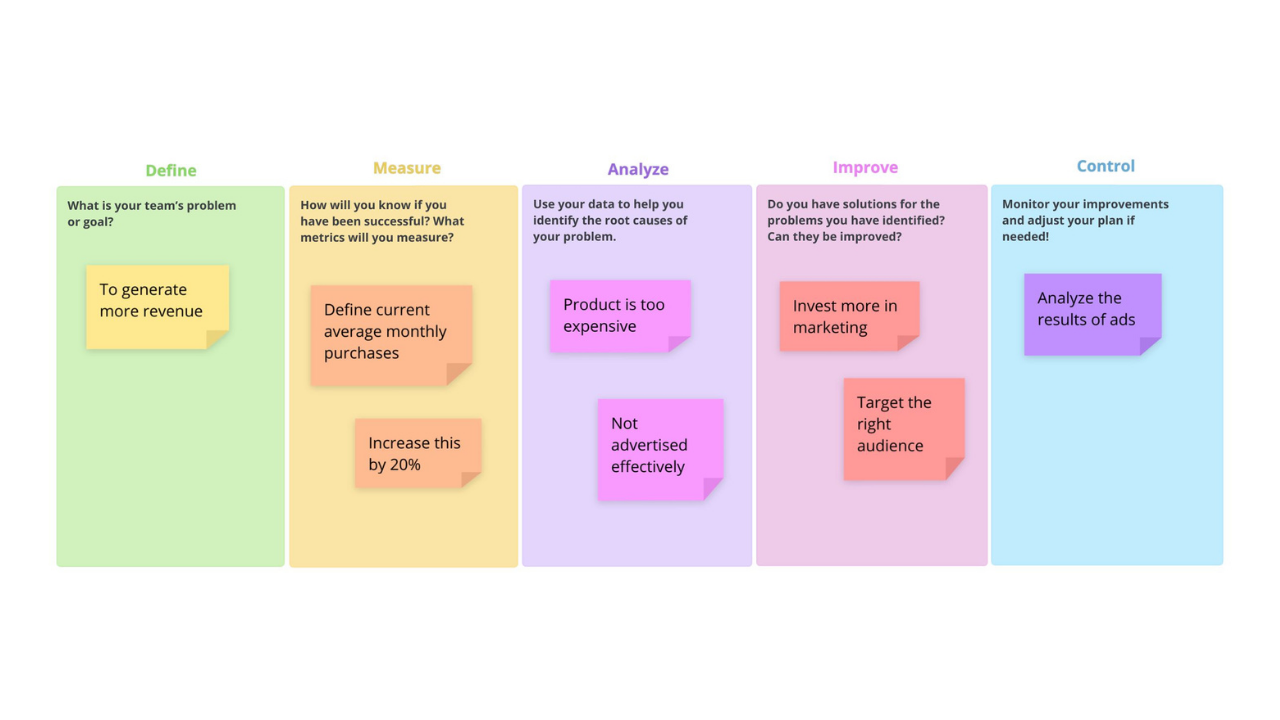DMAIC template

Ayoa’s DMAIC template helps you to improve your business processes by effectively identifying errors and generating the best possible solutions.
What is DMAIC and what does it mean?
DMAIC is one of the most popular of the Six Sigma methodologies – a set of tools that enable teams and wider businesses to fix errors and improve processes. Standing for Ddefine, Measure, Aanalyze, Improve, and Control, DMAIC is a 5-step process that helps you to identify problems and generate effective solutions, using data analysis to help you make improvements.
Why should you use DMAIC?
Although the DMAIC methodology is most commonly used in manufacturing, it is an effective problem-solving technique that can be applied to virtually any project or process where you need to make improvements. DMAIC makes problem solving simple by breaking the process down into 5 clearly defined and streamlined steps.
By requiring you to focus on a specific problem, define how you will measure improvements, use data to analyze the root causes of the problem, devise solutions to your problem and make continuous improvements to how you address it, you can ensure your best chances of success with the DMAIC methodology.
How to use our DMAIC template
In order for DMAIC to be effective, you must complete every stage of the process and ensure that each step is completed in the correct order. Ayoa’s DMAIC template is already set out in order of what needs to be done and is already populated with examples, making it easy to get started.
To access the template, sign up to Ayoa. Once you've signed up, navigate to the homepage to create a new whiteboard, mind map or task board and choose this template from the library.
To get started with the DMAIC process, the first thing you need to do is to define the problem you want to solve or the goal you want to achieve. It can be helpful to examine your existing processes and identify any errors that need to be addressed. Be as specific as possible during this stage, as this will help you when it comes to generating solutions.
Now it’s time to clarify how you will measure the results of your actions. What key metrics will you look at? How will you determine if you’ve been successful?
During this stage of the process, you will need to use data to analyze your problem and identify its root causes. In the case of low sales, it may be that you are targeting the wrong market with your advertising or your product is too expensive. Try to think of as many causes as possible, then add them as individual sticky notes and prioritize them in terms of importance. This will help you to determine which causes you will focus on in the next step.
The answers you added in the previous section of the template should help you to generate solutions to your problem and its root causes. Add these to the ‘Improve’ section of the template, then try to figure out how you can improve them to generate the best results.
The last stage of the DMAIC process is all about control. Use this section of the template to monitor your improvements and (if needed) determine how you will adjust your plan to ensure continued success or further finetune your processes.
